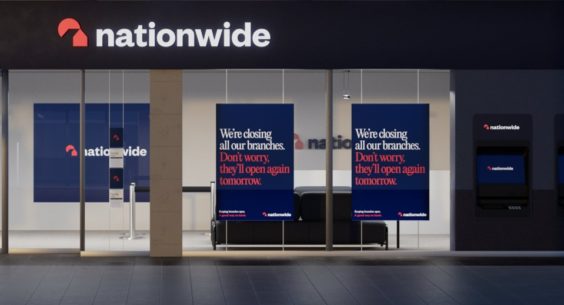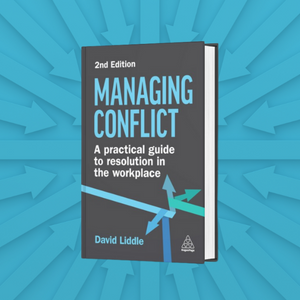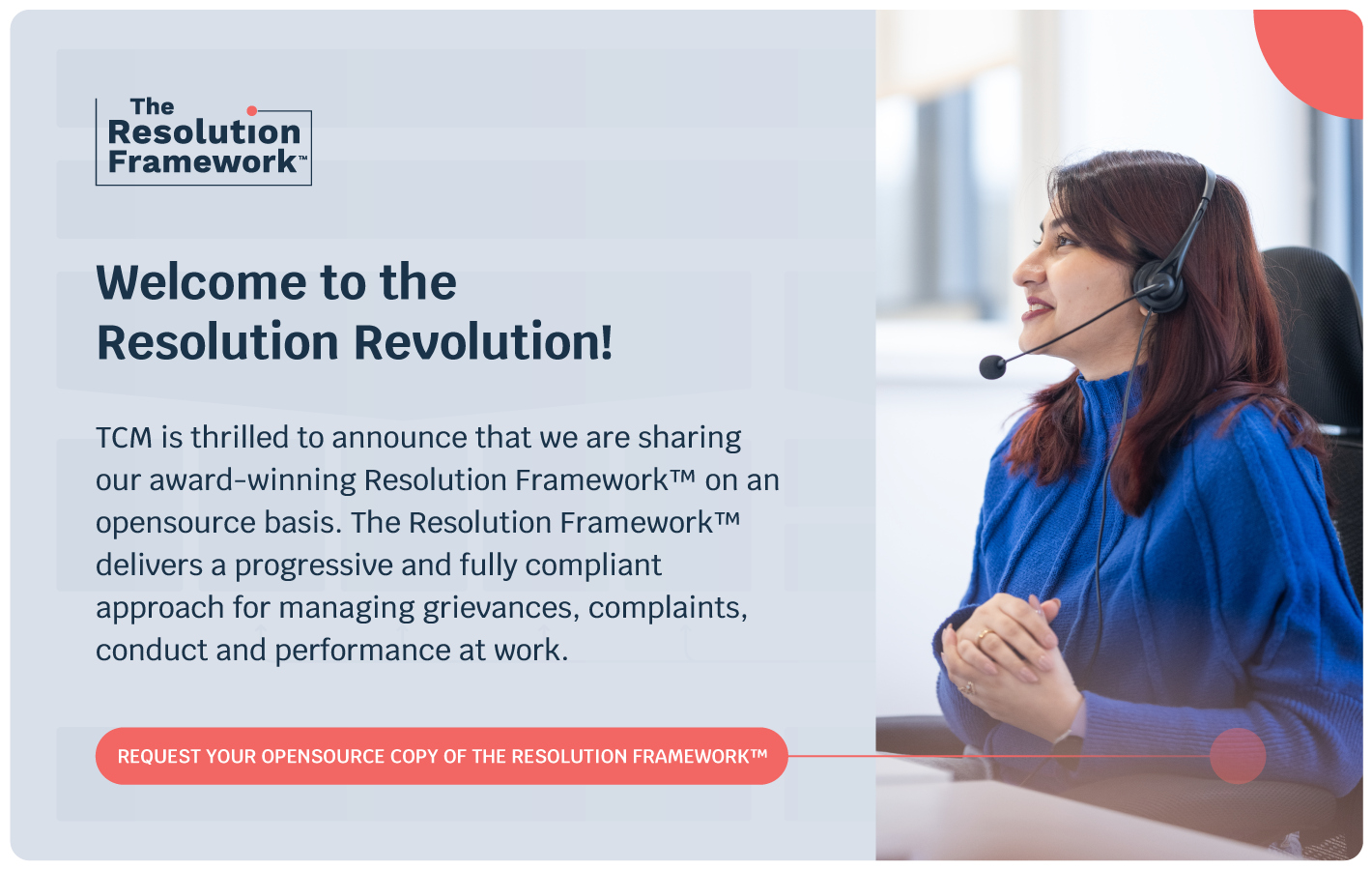
Nationwide Building Society introduces a restorative approach to resolution
With thanks to Rob Rao, Head of Case Management & Regulation at Nationwide Building Society, for providing this case study
Nationwide Building Society is a British financial institution and at the time of writing stands as the largest building society in the world. It is not a bank; it is mutually owned by its members and run solely to help the communities it serves. With this in mind, its institutional ethos is one of mutual respect – fostering collaboration in a compassionate way is at the forefront of everything Nationwide does. For the People and Culture (P&C) team at Nationwide, the internal systems of the Society should carry this impetus too: cue the implementation and embedding of TCM’s Resolution Framework.
Like many organizations, Nationwide Building Society had traditional processes for employees to follow when filing a complaint or grievance. Annual costs of investigations, appeals, business time and formal litigation could be significant. But more than this, Nationwide was committed to creating and maintaining an environment which enabled everyone to feel good, be themselves and perform at their best, crucial to their commitment to Inclusion, Diversity & Wellbeing (ID&W) and the organization’s values as a Society. Nurturing and encouraging exchanges of view, a normal, natural and inevitable aspect of working life and human interaction, was something Nationwide wanted to further promote to support conflict resolution.
Finances aside, it is hard for traditional grievance processes to fully capture the human value. This is why the team was really keen to explore a more modern and innovative approach to resolving workplace disputes. The Resolution Framework provided a great opportunity to do what was right to undergo this cultural evolution, and senior buy-in was sought and agreed.
Making the move to restorative resolution has exceeded the organization’s expectations. The collaborative attitude during the project phase allowed everyone to work together and cultivate team synergy.
The P&C team responsible for implementation was really keen to involve a number of stakeholders in design and implementation, including the staff union, Legal and Compliance, creating advocacy and involvement Society-wide. They spent much time working with the Society’s Employee Network Groups, which are open to all employees, including those who share similar characteristics or life experiences and who want to connect with others, providing peer support and working collaboratively with the business, acting as a collective employee voice. This, alongside working with the Healthy Mind Champions, an organizational body dedicated to protecting and promoting employee wellbeing, has helped the team understand how to create wider advocacy, understand key challenges and spread the message of the cause for constructive conflict.
Since the programme went live to the whole Society in late April 2022, it’s been seen that by having courageous, critical and compassionate conversations, fewer concerns have escalated to become formal investigations. When conducting some initial review of progress, the team also identified an average reduction between end-to-end closure of Resolution Framework cases compared with grievance cases, which is good news for all involved. Below are just a few examples of the stories people are telling about resolution:
‘I’ve found the change in focus from past behaviour to resolution positive; it’s helped reshape discussions with employees to what they need moving forward, rather than dwelling on what has already happened.’ Senior Case Consultant
‘I am more than happy with how it’s all going… I’ve worked with some smashing P&C consultants who are magnificent and so supportive. Everything once the wheels start moving is great.’ Business Leader
‘We’ll be embarking on a full post-implementation review this year and seek to understand how we can continue to evolve this innovative approach and really embed it across the organization.’ P&C Manager
Working closely with stakeholders, listening to a variety of perspectives, has helped inform and evolve the team’s approach. Recognizing that it will take time to fully embed the new approach, the team is looking to do a full post-implementation review in the new financial year to understand more about the data, user feedback and feedback from other stakeholders and how to evolve the proposition.
A number of self-help tools, case studies, hints and tips have been made available to all employees and managers on the Society’s intranet pages, enabling quicker local resolution of concerns without the need for escalation. Employees then have the opportunity to share their request for resolution, which will be triaged by a specialist team member in their P&C team, who will work with the individual to explore the situation and outline the most appropriate way forward.
Adopting the Resolution Framework at Nationwide has prevented bigger problems from occurring by finding early resolution. The former grievance processes were appropriate in certain situations, but they could promote unnecessary formality, focusing more on blame rather than resolving issues. The resolution approach is about looking forward, listening to each other, welcoming challenge and different viewpoints, and creating a safe space for everyone to confidently and constructively speak up.
This case study first appeared in Liddle, D 2nd ed (2023) Managing Conflict: a practical guide to resolution in the workplace. Kogan Page





